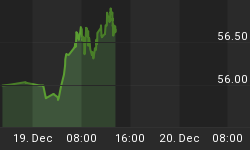The U.S. economy may be improving—but tell that to the millions of people still struggling to mete out a basic, middle-class living amid rising consumer prices, according to a new study.
According to a recent United Way study, some 51 million households in the United States, or 43 percent of households in the country, don't earn enough to cover the basics, such as rent and food.
That figure includes the 16.1 million households living in poverty, as well as the 34.7 million families living from paycheck to paycheck. California, New Mexico and Hawaii have the largest share of struggling families, at 49 percent each, while North Dakota has the lowest at 32 percent.
The prices of pretty much everything have been rising lately thanks to low unemployment, inflation and higher demand.
And things might get worse. In order to counter inflation, several U.S. companies have recently said they already had or were planning to raise prices on their goods or services.
McDonald’s has shaken up some of its menu prices and Chipotle has raised prices by more than 5 percent.
Both Amazon and Netflix have also increased their membership prices. Last October, Netflix announced it would raise prices for its standard package for U.S. subscribers from $10/month to $11/month. And some believe that prices will go up even more.
Amazon Prime hiked prices this month from $99/year to $119/year. Even so, a recent poll indicated that the vast majority of subscribers would stick to the higher-priced service.
The world’s biggest farm-machinery manufacturer Deere announced it would increase its equipment prices to compensate for higher material and freight costs.
Unemployment is below 4 percent for the first time since 2001, and salaries are increasing (albeit slowly), while people are spending more.
Related: Senate Votes To Protect Net Neutrality, But What’s Next?
The Commerce Department’s recent report showed consumer spending, which accounts for more than two-thirds of U.S. economic activity, increased 0.4 percent in March after being unchanged in February.
At the same time, higher-cost labor, the mouth-watering increase in oil prices and higher transportation and commodity costs are hurting company profit margins.
The price of West Texas Intermediate (WTI) crude has hit $72 a barrel for the first time since December 2014 and U.S. drivers are now paying some $3 per gallon of gas, 27 percent higher compared to last year.
According to the Federal Reserve’s preferred gauge of consumer prices (excluding volatile food and energy), costs rose 1.9 percent in March, from a year ago. Consumer prices were up 2.1 percent in April from a year ago, while suppliers paid 2.6 percent more.
Someone’s got to fill in that gap, and it looks like it’s going to be the American 43 percenters.
In addition, the Federal Reserve is gradually raising interest rates, at 1.5 percent to 1.75 percent, the highest in a decade. That will make auto loans, mortgages and credit card rates higher too. The 30-year fixed-rate mortgage has moved to a seven-year high above 4.6 percent.
For this year, the Federal Reserve expects that the economy to keep expanding at a moderate pace, and inflation will run near the central bank's 2-percent target, a notable change after years of low inflation.
By Michael Scott for Safehaven.com
More Top Reads From Safehaven.com:
















